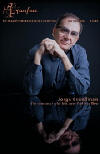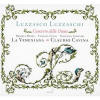Texte paru dans: / Appeared in:

Fanfare Magazine: 35:5 (05-06/2012)
Pour
s'abonner / Subscription information
Les abonnés à Fanfare Magazine ont accès aux archives du
magazine sur internet.
Subscribers to Fanfare Magazine have access to the archives of the magazine
on the net.
Glossa
GCD 920919

Code-barres / Barcode:
8424562209190
Consultez toutes les évaluations recensées pour ce cd
~~~~ Reach all the evaluations located for this CD
The dozen songs that form the heart of this program have been well known on records. They first appeared as a set on Italia ITL 70050; then they were sung by a trio of sopranos accompanied by Sergio Vartolo on Harmonia Mundi (Fanfare 9:1; CD in 9:2 and 11:1). Another set with some extra pieces came from Musica Secreta on Amon Ra. Then Consort of Musicke titled a disc like this one but included only five of the songs, while Doulce Mémoire used the same phrase while omitting three of the songs. This time Claudio Cavina arranges all the songs in the same order as the Vartolo disc, inserting three instrumental fillers along the way and ending with two contemporary songs. It may be noted that a few of the songs have also been sung in miscellaneous disc programs.
Luzzasco Luzzaschi (c.1545–1607) worked at the court of Ferrara until the last duke died in 1597. He had written these madrigals not long after 1579 when the duke married the sister of the duke of Mantua. She brought with her three talented ladies who sang and played. The ladies performed nightly for the ducal family and their closest friends, so the repertoire such as these madrigals remained secret while the reputation of the ensemble spread throughout Italy. It was only after the duke’s death that this secret repertoire received a wider audience through its publication in Rome in 1601. It is possible that the two other composers on this disc also wrote songs for the ladies, for the 1601 publication is no longer thought to be the complete repertoire of the ladies. That seemed unlikely in any case.
Claudio Cavina, who has always done repertoire of this type so well, uses three sopranos and four players from his ensemble with superb results. The sound is more varied than Vartolo’s harpsichord, excellent as that disc was. The two postscripts are rarities; I have only a single example of Ludovico Agostini in my collection and nothing of Paolo Virchi, but they fit neatly on the program. This is especially attractive if you don’t have Vartolo’s old disc.
Cliquez l'un ou l'autre
bouton pour découvrir bien d'autres critiques de CD
Click either button for many other reviews


